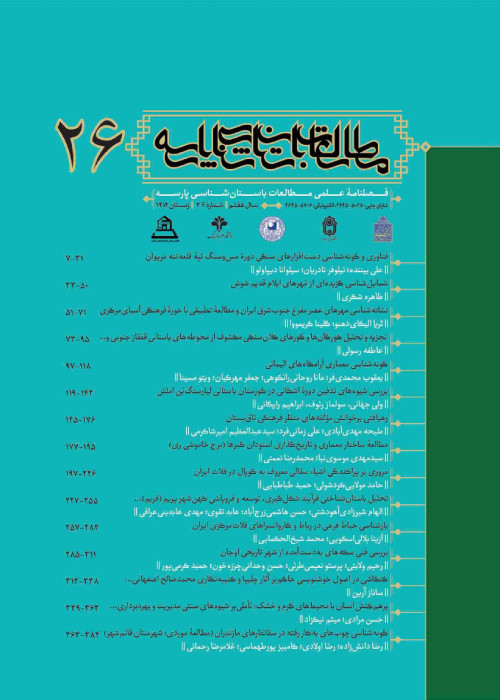Experimental Archaeology; Investigating and Reconstructing Gray Pottery Firing Techniques During the Third Millennium B.C. Until the First B.C. in the Eastern Regions of Central Zagros
The two most prominent types of material cultures in eastern Zagros are Bronze Age black burnished pottery (3rd millennium BC) and grey Iron Age pottery (second and first millennium BC) that were dog out during archaeological expeditions are being investigated and reconstructed. The technique of firing these two types of pottery will be analyzed in the present study. The main objective of this research was to reconstruct the similar conditions and techniques of these two pottery class using experimental archaeological methods and practical reconstruction of traditional kilns. Along this route, the technical similarities and differences are discussed, relying on archaeological data and comparing it with reconstructed samples. In this regard, two samples of each of the Bronze Age and Iron Age potteries were reconstructed and samples were produced and refurbished by traditional kiln that utilize modern laboratory facilities and precise temperature-measuring devices and are heated in the firing process. The results of the try and error tests indicated that baking with chemical reduction and emergence of gray color is the most important common feature of difference of gray pottery with other pottery assemblages. The firing technique and the structure of the kilns are the most important factors in distinguishing the two types of bronze age and iron age pottery assemblages. What is certain is that with the evolution of the furnace structure, the heat generated from about 700 ° C in the gray Yanniq period of the Bronze Age has increased to about 1000 ° C in the Iron Age specimens, resulting in a higher firing quality as well as a complete and complete chemical reduction of the vessels. Practical comparison of the reconstructed samples showed complete conformity of their characteristics with the ancient specimens (Pisa Tepe, Tushmalan Tepe and Ahmadabad Tepe) and also revealed the secret of producing these two species of gray pottery.
- حق عضویت دریافتی صرف حمایت از نشریات عضو و نگهداری، تکمیل و توسعه مگیران میشود.
- پرداخت حق اشتراک و دانلود مقالات اجازه بازنشر آن در سایر رسانههای چاپی و دیجیتال را به کاربر نمیدهد.



